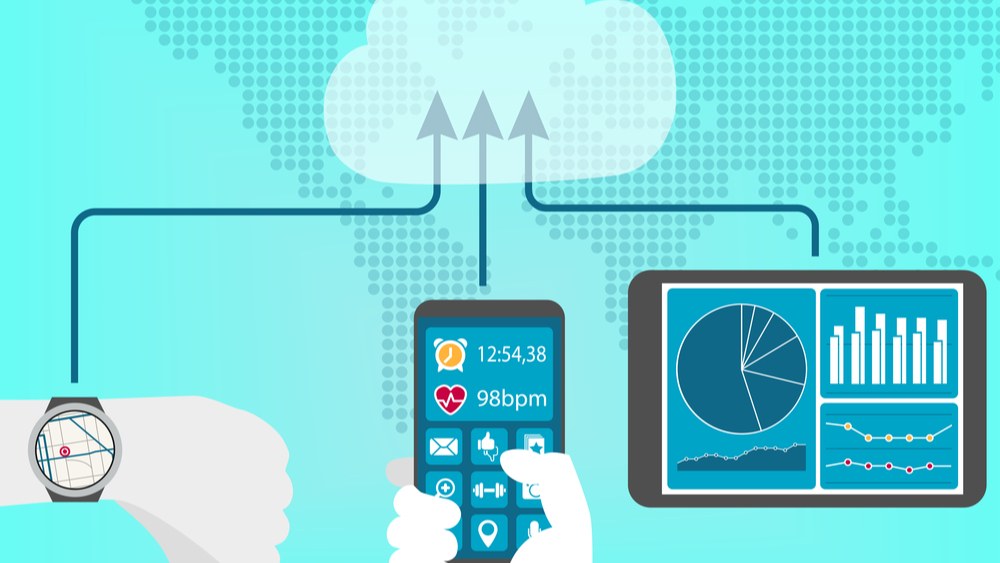Back to articles
Building winning healthcare wearables with Nordic's development tools

Wireless solutions are already playing an increasingly essential role in the future of global healthcare, but more innovation is needed.
Challenges to be met include obesity and diabetes resulting from increasingly sedentary lifestyles. Add to that the major healthcare crisis caused by Covid-19 (and so-called Long Covid), which threaten to stretch the worldwide healthcare system to its limits.
Read more: Wireless contact tracing highly relevant in a post-COVID-19 world
To encourage novel wearables for a healthier world, Nordic Semiconductor recently called on the Hackster.io forum—a hardware education community—to create new product prototypes or Proofs-of-Concept (PoC) that push the boundaries of what smart healthcare wearables can do.
Advanced wearables challenge
Nordic and Hackster's Advanced Wearables open design contest invited applicants to build and document either a medical wearable for remote patient monitoring or their "dream smart wearable."
Remote patient monitoring helps ease the burden on hospitals and allows healthcare professionals to access a more complete picture of a person's health while the patient stays home.
Smart wearables help people monitor their fitness levels and generally stay motivated to lead a more active lifestyle.
The winning projects in the Advanced Wearables competition were awarded based on the entries' creativity, impact, and execution.
Challenge A – 'Dream Smart Wearables' projects were based on:
- Nordic nRF5340 DK, a precertified single-board development kit with a dual-core nRF5340 Bluetooth 5.2 SoC supporting data transfer or connection to other devices using Bluetooth LE
- The Adafruit Display, a touchscreen display shield with a built-in microSD card connection
Challenge B – 'Remote Patient Monitoring,' projects were based on:
- nRF5340 DK
- Nordic's Power Profiler Kit II (PPK2), a low-cost, highly accurate tool for measuring and controlling power consumption in embedded hardware designs
Smart wearables are usually powered by small batteries, making power optimization a critical design parameter.
Entries typically used the nRF5340 to
- receive and process data from one or more medical sensors,
- calculate relevant real-time statistics based on the data, and
- send this information over a wireless protocol, such as Bluetooth LE, to a smartphone, PC, or another host device.
Read more: Power Profiler Kit II brings greater insight to wireless power consumption
Dream Smart Wearable category winner: Activity and posture monitoring PoC.
The 'Best in Dream Smart Wearables' winner was "Naveen," for 'Posture Watchdog.' It's a PoC for a wearable device that accurately monitors the user's sitting posture and activity/idle time via machine learning (ML) and sends user alerts to increase physical activity or correct posture.
The Bluetooth LE peripheral (nRF52840 dongle) collects data from the built-in three-axis accelerometer (at a 25 Hz sample rate) and every second notifies the Bluetooth LE central device (nRF5340 DK with Adafruit Display).
The firmware, created using Edge Impulse Studio (an online tool to train and deploy ML models for quick prototyping), automatically uploads data from the USB UART connection to the nRF5340 DK.
Naveen created a small, standalone device that captures the data from the peripheral device over Bluetooth LE and saves it to the microSD. It enables the wearable to collect data (and model "inferencing") in the field.
According to Naveen, Nordic's nRF5340 DK proved a highly capable piece of hardware suitable for TinyML, the cutting-edge field that brings machine learning to the performance- and power-constrained domain of tiny devices.
Remote Patient Monitoring category winner: Remote ECG Holter monitoring system.
The 'Best in Remote Patient Monitoring' winners, Ed Oliver and Alejandro Sanchez, created 'EHM: Electrocardiography Holter Monitor,' an electrocardiogram (ECG) Holter monitoring system for heart rate analysis of patients with cardiac risk factors. (A Holter monitor is a portable device able to detect periodic abnormalities in heart function.)
The solution uses the nRF5340 DK and the PPK2 to aggregate patient vital signs data—including temperature, SpO2, heart rate, heart rhythm, and electrical activity—and provide important information to caregivers.
Once the system is configured, all data can be wirelessly relayed from the nRF5340 DK to the nRF Gateway and nRF Cloud, and in turn to the Node-RED Web-based dashboard for deeper analysis. According to the entrants, the medical device prototype solves some of the problems related to gel-based electrodes, such as signal quality. It has market potential for both sports science and clinical applications.
Read more: 'State-of-the-heart' wireless solutions improve cardiac health monitoring
Grand Prize winner: Remote baby vitals monitoring and alert system.
The Grand Prize was awarded to "xkimi" for creating 'Baby Guard.' It's a compact baby vitals monitoring system that sends real-time emergency alerts to caregivers to help prevent sudden infant death syndrome (SIDS). The wearable integrates a pulse oximeter and heart rate sensor to monitor vitals, including body temperature, breathing, heart rate, and blood oxygen saturation (SpO2) – an essential physiological parameter reflecting respiration and ventilation function.
In this project, the nRF5340 DK provides the core processing power to run the complex algorithms for collecting the vital signs data. It also offers wireless connectivity to transmit the data to a smartphone. Here, the Android-compatible' Flutter' app can access the key metrics. (Flutter is an open-source UI software development kit created by Google.) In turn, the smartphone performs as a gateway for storing and pushing the information to the Cloud for further analysis via a Web-based dashboard.
The world's first wireless SoC with two Arm Cortex-M33 processors, Nordic's nRF5340 SoC, is an ideal choice for complex IoT applications, including advanced wearables.
Read more: Why does the nRF5340 have two cores?


